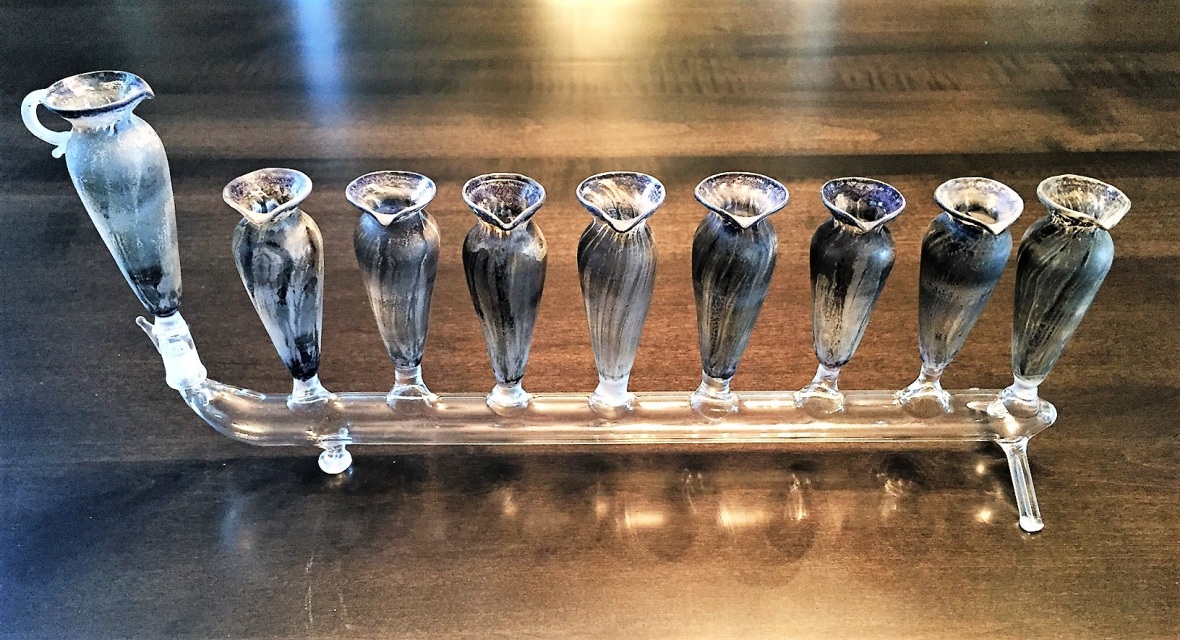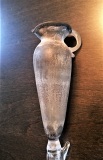- Glass Art
- >
- 8 branched Oil Menorah / Hanukiya with Removable Shamash GR ANT
SKU:
GR ANT
8 branched Oil Menorah / Hanukiya with Removable Shamash GR ANT
$150.00
$150.00
Unavailable
per item
While Moses was on Mount Sinai, Moses received numerous instructions regarding the building of the sanctuary and articles within this house of G-d. One of the main items in this house would be the 7 branched menorah. Twice in the book of Exodus we find a detailed description (25:31-38 and 37:17-24) of its construction and use. This candelabrum has taken many forms throughout history.
1 available
During the years of the Sanctuary in the desert and later in the days of the 1st and 2nd Temple the purpose of the menorah was to be a light both internal and external. The menorah is a symbol of the nation of Israel "a light unto the nations." (Isaiah 42:6). The light of the menorah as being a source of power as found in a vision of Zechariah 4:1-6. G-d explains: "Not by might, nor by power, but by My spirit." During the rule of the Antiochus the 2nd Temple was looted. After defeating the Syrians, the Hasmonaens wanted to purify the Temple and light the menorah though only enough oil for one day was found. The 8 day holiday of Chanukah commemorates the miracle that a day's worth of oil for this menorah lasted eight days. Spoils of war have marked the destruction of the first and second temple. The Romans have erected a victory arch in Rome which has the menorah being carried symbolizing the capture of Jerusalem. There are scholars who argue that this could not have been the menorah that stood in the Temple since in its depiction in the arch there are symbols of animal gods worshipped by the Romans that contradict the belief of praying to one god. After the Temples were destroyed, a prohibition by the rabbis made sure that no 3 dimensional menorah would be developed not to duplicate anything from the Temple. However, throughout the years, many artisans have chosen to express themselves artistically through using the symbol of the menorah. Israel’s first art academy, which is in Jerusalem, was named for Bezalel the biblical artisan who was commissioned to make the seven-branched gold menorah. The state of Israel has adopted the menorah design as its state emblem from the arch of Titus in Rome, Italy because for the state of Israel the menorah symbolizes the national revival of Israel as apposed to the destruction and exile it has been through which is seen in Rome, Italy.




